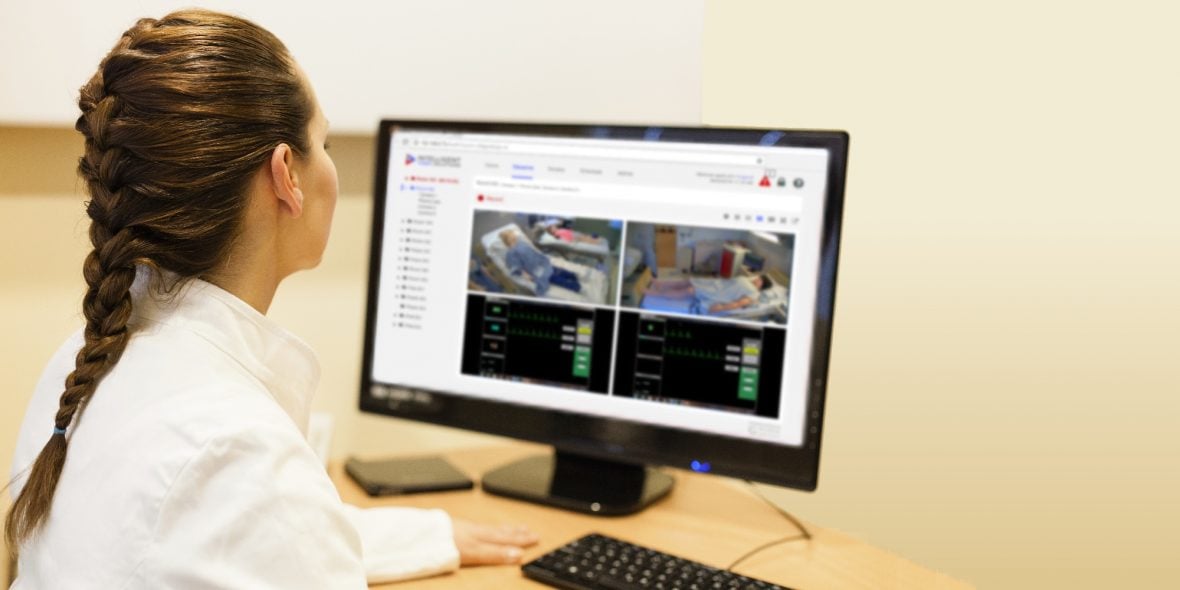Preparing for an Objective Structured Clinical Examination (OSCE) is resource intensive. At a minimum you recruit and train examiners and standardized patients, book and prepare space for your circuit of stations, and define and refine curriculum. How can a video recording and observation system help you prepare?
If you’re considering implementing, or have already implemented, a video capture system to help achieve objectivity and structure, this post outlines ways to make the most of your system leading up to OSCE test day.
Five ways to use your video recording and observation system to help prepare for an OSCE.
- Simplify Examiner Training
An easy-to-use video recording and observation system includes tools to reduce the learning curve and allow an examiner to learn how to use it in ten minutes or less.
If you’re using Pan-Tilt-Zoom (PTZ) cameras, one such tool is software camera presets. Software camera presets allow you to define camera angles and focus, so an examiner just selects where they want the camera to go from a drop-down menu and the camera moves to the pre-defined position. This eliminates decision making by the examiner about where and how they should position a camera. For example, if an examiner needs to track activity from a patient bed to a medicine cart at their station in the circuit, create a preset labeled “medicine cart.” The examiner clicks the preset drop-down menu and chooses “medicine cart,” and the software moves and focuses on the medicine cart. Presets simplify training, ensure standard views for each OSCE station, and reduce observer variables.
No training on camera movement required if you use fixed cameras. Depending on your software, an examiner may use digital zoom (a function of the software, not the camera) to zoom in and out of a camera view without impacting the recorded image or perspective of another observer. Fixed camera views are inherently consistent and provide the same focus and field of view at each station every time.
Another tool to simplify examiner training is user permission settings in the software. Consider getting granular. Permission settings are not just for information security, they also contribute to ease-of-use (i.e., less training). For example, if you restrict an examiner’s camera views to those specific to their assigned station, when they sign in, they don’t have to navigate through unrelated station camera views. Another example would be to associate an electronic assessment form specific to their station, so when they login they have immediate access to their score sheet or global rating scale. If your software supports it, add markers to each field of the examiner’s assessment form, so they can note red flags with the click of a button.

- Review and Refine Curriculum
Another benefit of electronic assessment forms when it comes to preparing for an OSCE is the ability to evaluate outcomes of practice tests and informal OSCEs to inform changes to curriculum or OSCE station objectives. For example, if your video recording software supports report building, you may generate reports based on the outcomes captured in your assessment forms, per individual or by group of individuals, to identify trends among examiners and/or examinees. When you apply changes based on this data, re-evaluate after your next practice OSCE to track trends, and demonstrate progress or identify areas for further improvement.
If you share space with other disciplines for OSCE, configure your video recording and observation system to support the nomenclature of each program, so that multiple departments can use the system on-demand, based on multi-tenant configuration and access control. This allows room names, video indexing tools, and assessment templates to be specific to each program, so when preparing for an OSCE each program captures data specific to their evaluation objectives and intended performance outcomes.
Video Recording System for OSCE Training - Intelligent Video Solutions
- Make the Most of Your Space
Use your video recording and observation system to create virtual observation stations for each examiner via a networked device (computer, laptop, tablet, etc.), if circuit space is limited, rather than examiners having to be in the same room with the examinee.
Each OSCE station requires less space when examiners observe via your software, which may free up room for additional stations in the circuit. You may also be able to reduce the quantity of examiners required per station since one examiner can get multiple perspectives from side-by-side camera views in the video recording software. Reducing the quantity of persons in the clinical exam room may also help maintain the realism of a clinical setting, as well as reduce examinee stress if they are less aware of observation, both of which may improve performance outcomes.
Side note: If you don’t have a permanent space or a permanent audio/video system is out of budget, consider a portable video recording system. If possible, eliminate the use of handheld devices to reduce variables in video capture such as camera location or audio/video and look for a tripod mounted tablet or cart with a mounted camera and microphone. Position portable tripod or cart-mounted camera devices consistently using a mark on a floor or a table.
- Record and Playback Practice Sessions
You’re likely using or planning to use a video recording system for clinical skills training and/or simulation. Use the same system to help students prepare for their OSCE by recording practice or informal OSCEs. Then use the electronic assessment tools in your system to provide feedback on student performance and/or have students complete a self-evaluation.
Check out this case study with the University of Alberta that describes how their pharmacy program uses video to record scenarios geared towards OSCE.
- Improve Standardized Patient Performance
Capture Standardized Patient (SP) practice performance with video and provide feedback. For example, use the software to create a Standardized Patient performance checklist that lists the characteristics or dialogue expected at their station. A checklist provides concrete, measurable feedback to help the Standardized Patient give a consistent, replicable performance. Long-term, store Standardized Patient practice recordings in your video recording and observation system and use them to help train future SPs.
A video recording and observation system can help prepare and train for an OSCE to help ensure a smooth, stress-free, test day. If you’re looking for more ideas about how to use a video recording and observation software to facilitate an OSCE, please check out this article.







